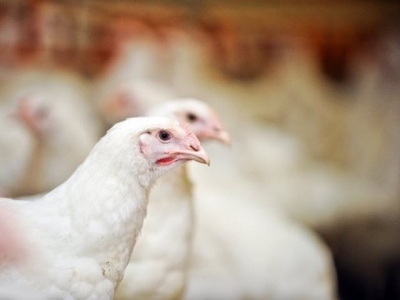Bone selection matters in broiler ash measurement

Matching leg bone type to bird age improves sensitivity of bone ash measures poultry, according to new research.
Photo: Shutterstock
The study found that the best bone for differentiating response to diet alters with bird age.
Researchers from Nottingham Trent University fed 72 male Ross 308 broiler chicks 1 of 2 wheat/soya based mash diets from date of hatch to 42 days, housing them in groups of 6 in 0.64 square metre floor pens bedded on fresh wood shavings.
Different levels of total phosphorus (7.8 and 4.4g/kg for Control and Low diets) and calcium (22.7 and 13.1g/kg) were fed to 6 replicate pens of 6 birds. Each week, 6 birds per diet were euthanised and leg bones removed to measures ash percentage.
Foot, toe, tibia and femur ash were compared using the mean of both legs from each bird, via t-tests to separate Control and Low diets.
The results showed that, while toe ash was the most efficient bone to measure, it was only able to identify diet differences at week 2 post hatch. The femur did not show any differences until week 3 but then continued to show differences between diets until week 6.
Both foot and tibia ash differentiated between the control and low diets in weeks 2 and 5, and tibia continued to show significant differences between the diets into week 6.
Dawn Scholey, manager of the university’s poultry unit, commented: “It was useful to find foot ash provides a comparable alternative to tibia ash as it is so much easier to retrieve and measure, but there are clear limitations to where it can be used.
Assessing skeletal integrity
“I think interest in femur ash may grow alongside interest in meat processing efficiency, as carcass femur fractures cause disruptions during processing.”
Emily Burton, Nottingham Trent University research group leader, added that the findings were one segment in a major ongoing project to identify the best methods for assessing skeletal integrity in both broiler and egg layers.
The findings from the study can be found in the Journal of Applied Poultry Research.
Related news
 How to improve broiler feed efficiency beyond genetics
How to improve broiler feed efficiency beyond genetics There are measures we can take to improve feed efficiency, but they entail a cost that must be balanced against any benefits.
 How to increase broiler feed intake
How to increase broiler feed intake When birds do not consume enough feed, there are six steps we can take to entice them to eat more.
 Highly digestible prestarters for antibiotic-free broilers
Highly digestible prestarters for antibiotic-free broilers Broilers always benefit from a better diet offered early in life, and more so when their feed is free of growth-promoting antibiotics.